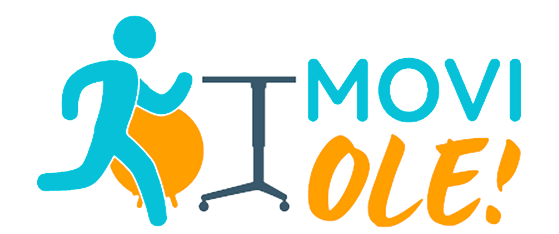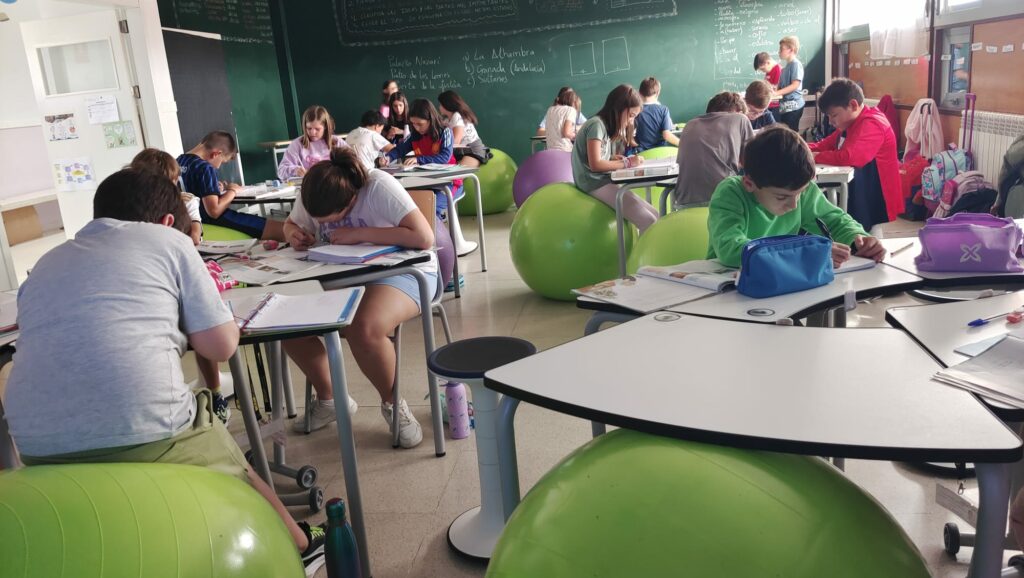
MOVI-OLE!
abstract
Several studies indicate that prolonged periods of sedentary behaviour negatively affect cognitive development and academic performance, whereas physical activity and regular breaks from sitting improve neurocognitive function and school achievement.
An innovative strategy to address this issue is the implementation of “Open/Flexible Learning Spaces” or “Movement-Permissive Classrooms,” aligned with student-centred methodologies. These classrooms use versatile furniture to promote collaborative work and reduce sedentary time.

The MOVI-OLE! [Open Learning Environment] study aims to evaluate the effectiveness of a classroom equipped with dynamic furniture and student-centred pedagogical strategies that promote movement in order to reduce sedentary time and improve cognition, physical fitness, body composition, wellbeing, and school engagement among children aged 9–10 years in Castilla-La Mancha, Spain.
ChatGPT Plus
Following the pilot phase conducted in one school, ten schools will be selected: five assigned to the intervention group, which will implement MOVI-OLE! for one academic year, and five to the control group, which will use traditional furniture and methodologies. Midway through the school year, the control group will also adopt the intervention.
MOVI-OLE! will replace traditional classroom furniture with dynamic work zones (including dynamic seating such as fitballs and stools, height-adjustable desks, and vertical whiteboards) and provide teacher training in student-centred approaches and movement integration.
Three assessments (baseline, mid-intervention, and post-intervention) will be conducted to measure the study variables: sedentary time, cognition, physical fitness, body composition, wellbeing, and school engagement.
Participants
Fifth-grade primary school students from CEIP FELIX GRANDE (Tomelloso)
In the pilot study
(academic year 2025–26)
In the trial
(academic years 2026–27 and 2027–28)
Funding

Funding

Status
Articles
Sánchez-López M, Violero-Mellado J, Martínez-Vizcaíno V, Laukkanen A, Saakslahti A, Visier-Alfonso ME. Impact and perceptions of Active Learning Classrooms on reducing sedentary behaviour and improving physical and mental health and academic indicators in children and adolescents: A scoping review. PLoS ONE. 2025; 20(2): e0317973.
Resources
Descarga la guía de la intervención MOVI-OLE (Espacio de Aprendizaje Abierto).
Este material ofrece estrategias metodológicas centradas en el alumnado y orientadas al uso pedagógico de los espacios de aprendizaje abierto, con el objetivo de promover el movimiento en el aula y optimizar el aprovechamiento del entorno MOVI-OLE.

